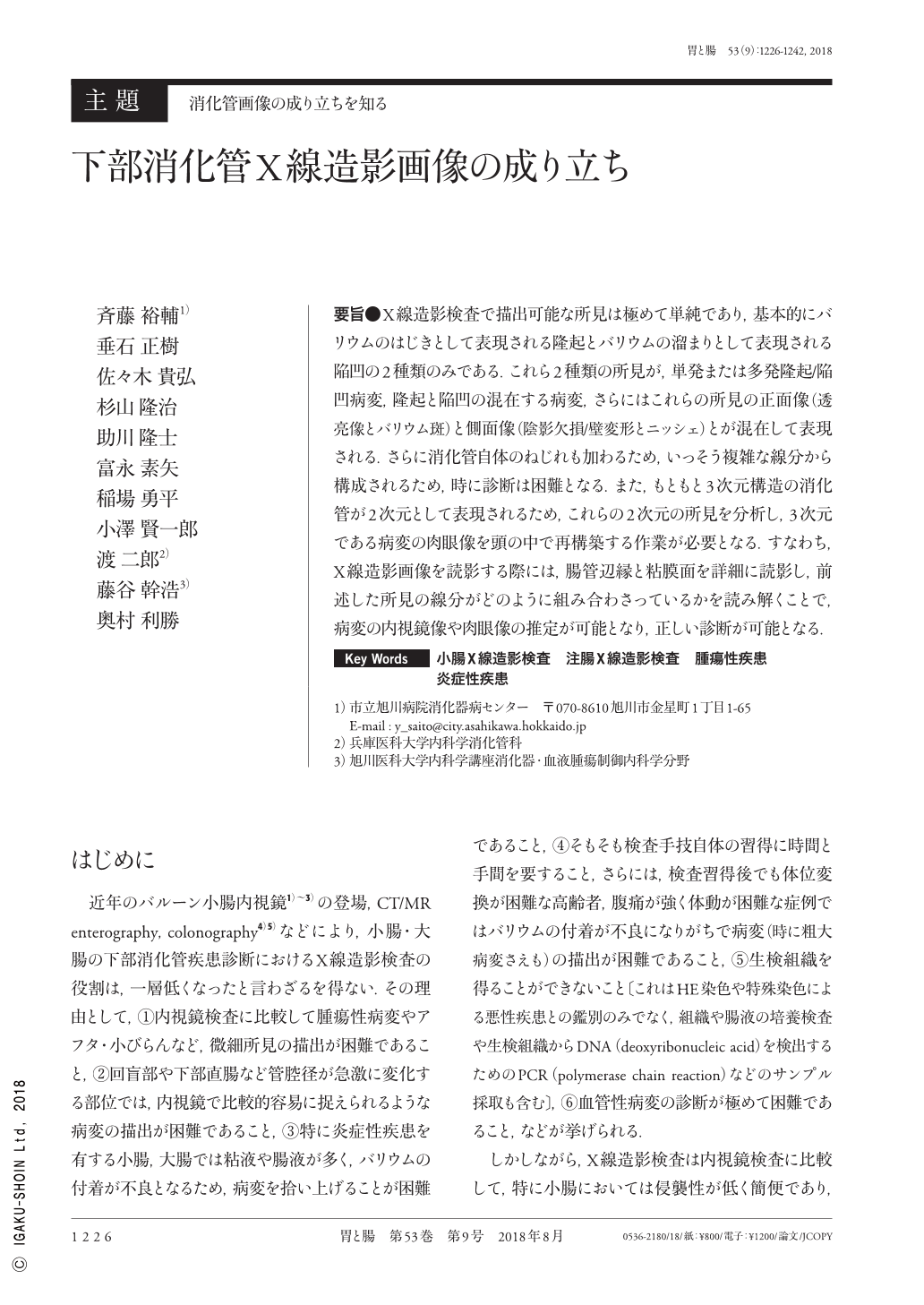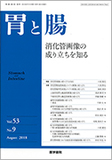Japanese
English
- 有料閲覧
- Abstract 文献概要
- 1ページ目 Look Inside
- 参考文献 Reference
- サイト内被引用 Cited by
要旨●X線造影検査で描出可能な所見は極めて単純であり,基本的にバリウムのはじきとして表現される隆起とバリウムの溜まりとして表現される陥凹の2種類のみである.これら2種類の所見が,単発または多発隆起/陥凹病変,隆起と陥凹の混在する病変,さらにはこれらの所見の正面像(透亮像とバリウム斑)と側面像(陰影欠損/壁変形とニッシェ)とが混在して表現される.さらに消化管自体のねじれも加わるため,いっそう複雑な線分から構成されるため,時に診断は困難となる.また,もともと3次元構造の消化管が2次元として表現されるため,これらの2次元の所見を分析し,3次元である病変の肉眼像を頭の中で再構築する作業が必要となる.すなわち,X線造影画像を読影する際には,腸管辺縁と粘膜面を詳細に読影し,前述した所見の線分がどのように組み合わさっているかを読み解くことで,病変の内視鏡像や肉眼像の推定が可能となり,正しい診断が可能となる.
The two main structural features identified in the delineation of barium-based contrast radiographic images of the small intestine and colon include protrusions, which appear as sites of barium translucency, and depressions, which appear as sites of barium collection. Radiography of the small intestine and colon frequently reveals complicated mixtures of these structural features. Accurately identifying single and/or multiple polypoid lesions, depressed and protruded lesions, and interpreting en face(translucent and barium collection)and lateral(filling defect/wall deformity and niche)images can be challenging. Radiograpic images will be more complicated by the addition of intestinal or bowel twist and sometimes resulted in an incorrect diagnosis.
Moreover, hence radiographic images are described by two dimensional ones converted from three dimensional original small intestine and the colon, we have to reconstruct to original three dimensional macroscopic findings in our brain from two dimensional radiographic images. Radiographic images must also be cautiously scanned for abnormalities of the borders and mucosal surfaces of the small intestine and colon. Only after careful analysis of the aforementioned complications, endoscopic and macroscopic findings of the lesions can be accurately interpreted, leading to a correct diagnosis.

Copyright © 2018, Igaku-Shoin Ltd. All rights reserved.


